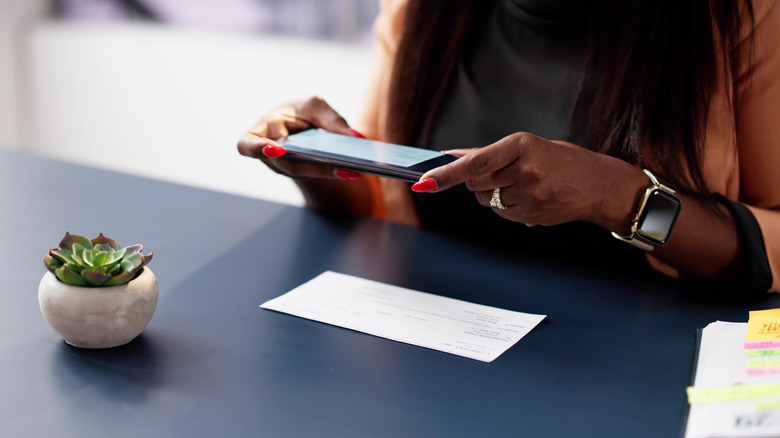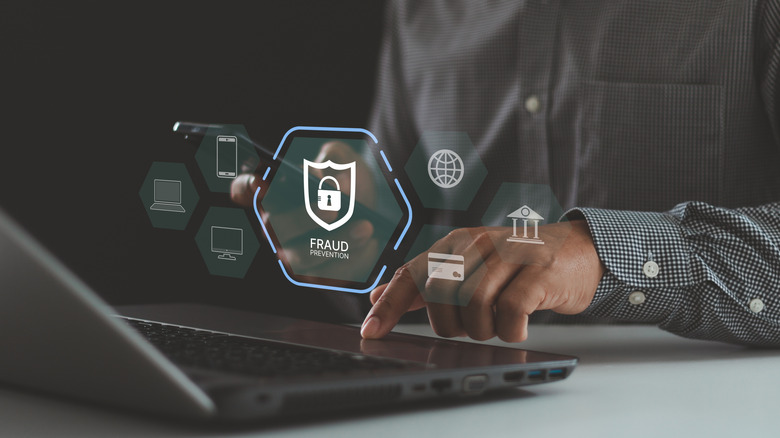What It Means If Your Bank Rejects Your Mobile Check Deposit
Mobile check deposits can be incredibly convenient transactions — at least when they go through bank processes smoothly. That isn't always the case, though, as New York residents have experienced in October 2025. More than eight million New Yorkers are eligible for an inflation refund check to offset rising costs of living. Depending upon income levels and how the person filed their federal income tax, they could receive anywhere from $150 to $400. As people receiving paper checks have found out, though, despite reassurances by the New York State Department of Taxation and Finance that these checks should be as easy to cash as ones from other sources, this isn't everyone's experience.
According to NewsChannel 9 reporting, KeyBank is willingly accepting deposits of these refund checks via its mobile app. Chase Bank, meanwhile, will not allow mobile app deposits or in-person cashing of these checks. Instead, customers must deposit them through a Chase ATM or at a branch. The main reason for Chase's refusal centers on security: Checks of a similar nature have sometimes been involved in cases of fraud. More generally, a financial institution could refuse to deposit a check through a mobile app because of the quality of the check. Checks that are folded, torn, difficult to read, or missing the sender or receiver's signature can also be rejected, as can checks where the deposit amount entered on the mobile portal doesn't match what's written on the check.
Mobile banking isn't always simple, but that's for good reason
Frustrating as fraud-preventing policies can be, financial fraud is a real threat. One reason banks might reject mobile deposits is if the check's magnifying ink character recognition (MICR) number appears altered. You can find MICR numbers at the bottom of every check in the form of a line of characters displaying the bank's routing number, the customer's bank account number, and the check's number. If these numbers are altered in any way, that can be a sign of fraud. In fact, if the MICR is illegible for any reason, that can cause mobile check deposits to be rejected. Other causes are even simpler: Sometimes, someone who mobile deposits a check in good condition might later see the amount deposited and then removed. That could mean there were insufficient funds in the sender's checking account — an issue outside of the bank's control.
According to a 2024 press release from America's Banking Association, a study conducted by Morning Consult found that about 55% of Americans use mobile apps as their top method of banking. So, make sure you shop for a bank before choosing one, and carefully review each of your options' policies for mobile app deposits. The ideal financial institution provides strong security protections without creating unnecessary red tape or slowdowns. If you're one of the many people who prefer mobile banking, make sure you understand your financial institution's mobile banking policies before cashing your next check.

